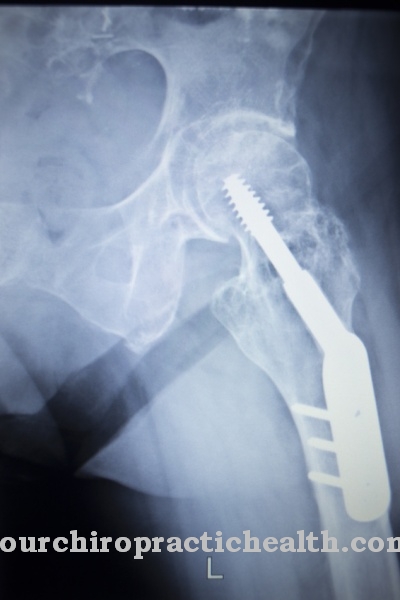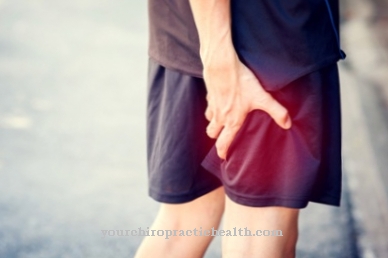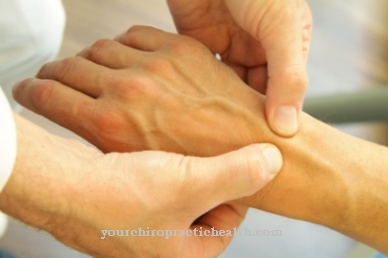The Perineum massage is suitable for pregnant women who want to prepare their bodies for childbirth. Massage of the perineal area between the vagina and anus loosens the tissue there and can often prevent a perineal tear or cut and contribute to better relaxation during childbirth. The massage can easily be done at home.
What is the perineal massage?

The perineal massage is part of the birth preparation and is often recommended by midwives. The goal is to make the area between the vagina and anus more supple so that it is less likely to tear at birth.
The perineum is exposed to great pressure during labor. With a regular perineal massage, the corresponding area becomes more flexible due to the increased blood flow. There is also a psychological component: the massage on the perineum prepares the woman mentally for the stretching during childbirth, which alleviates the shock in the relevant situation. Ideally, remembering the massage ritual will also help you relax during childbirth, which makes the birthing process easier.
The massage can be done easily and independently at home in a short time and requires no other aids apart from a suitable oil. Regular perineal massage should be started at least 1.5 months before the birth - either by the pregnant woman herself or by her partner.
Function, effect & goals
The perineal massage is intended to help pregnant women prepare their body and also their psyche for childbirth. Regular massage of the perineal area should be started no later than five, but better six weeks before the birth in order to achieve the best possible effect.
The aim of this special massage is to make the area of the perineum more elastic for the birth and to stimulate the blood circulation at this point so that the tissue does not tear during the birth process or even has to be incised for medical reasons. Of course, perineal massage is not a guarantee of a complication-free birth, but it does significantly reduce the risk of a perineal tear or a necessary perineal incision.
Five to ten minutes should be invested in the perineal massage at least every two days. For the greatest possible relaxation, however, it should not be carried out under time pressure. You can do the massage yourself or your partner can do it. A gentle, vegetable oil such as jojoba or almond oil serves as an aid. In a pinch, lubricant is also suitable. Special perineal massage oils are also on the market, but not absolutely necessary.
It is important that the woman feels comfortable during the perineal massage, as relaxation is an essential factor. A quiet, familiar room, possibly furnished with candles or the like, can help, as can a bubble bath before the massage. A comfortable position is also important. Most women prefer a half-sitting position on the bed or sofa, but the perineal massage can also be performed well lying down, squatting or standing with support.
When a comfortable position is found, a little oil is applied to the cleaned hands. Then the thumb is carefully inserted into the vagina, while the index finger, and possibly also the middle finger, massages the outer area of the perineum with gentle circular movements. The outer fingers can massage the perineum - under the spatial image of a clock - up to the height of about three and nine o'clock.
The second step is to stretch the vagina down towards the perineum with your inner thumb. Then two fingers are inserted, which are additionally spread in a third step. If the pregnant woman has difficulties getting into the vagina with two fingers, the thumb, which is inserted a little deeper, can also be used to stretch the lateral and lower vaginal entrance. The resulting pressure should be increased so slowly that resistance can be felt but no pain occurs.
The final step of the perineal massage is to slightly arch the perineum outward with your thumb, especially at the bottom. Again, there should be resistance, but no pain. Anyone who is unsure about performing a perineal massage can ask their midwife for advice. This will gladly advise a pregnant woman in the event of difficulties and give valuable, individual tips.
Risks, side effects & dangers
When performing a perineal massage, it is of course important to have clean hands and short fingernails so that the massage can proceed hygienically and without injuries.
In the case of infections in the genital area, it is better to avoid the perineal massage, as otherwise the infection may worsen or even spread. A fungal infection, for example, requires treatment by the gynecologist before a pregnant woman can perform the perineal massage.
Anyone who already knows that they are prone to premature labor should seek advice from a midwife before having a perineal massage. Incorrect pressure in the perineal area can further promote premature labor in some women. For many women, massage and self-massage on the perineum are simply uncomfortable. In such cases, warm, relaxing hip baths can be a possible alternative. They too loosen the perineal area and ensure better local blood circulation.













.jpg)

.jpg)
.jpg)











.jpg)